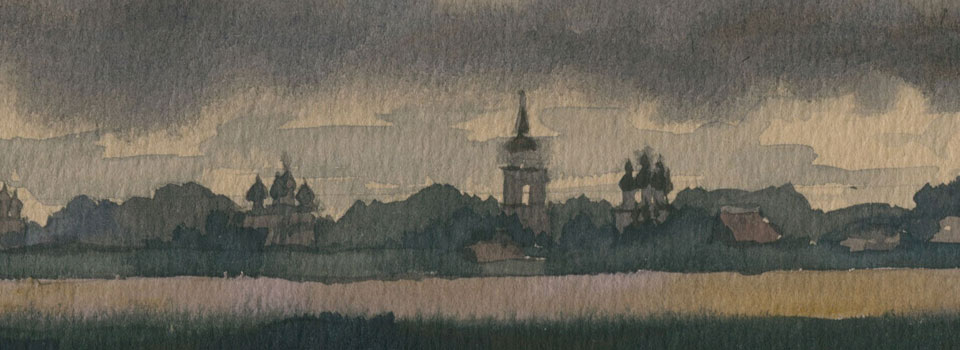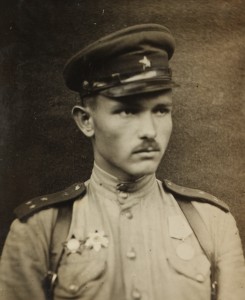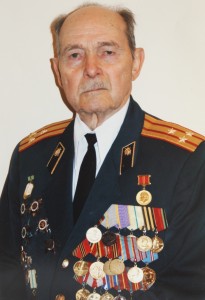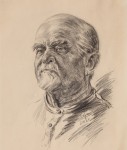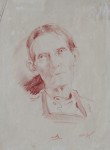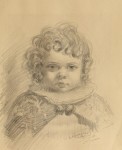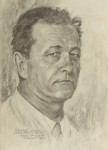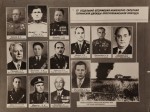Pavel Ivanovich Afonin (1920-2011)
Pavel Ivanovich Afonin was born in 1920 in the small village of Noviy Mochim in the Pensa region. He was the youngest (13th) child in the family. His father Ivan Ignatievich Afonin had a small farm, where he taught his children to work from an early age.
Pavel started drawing with a pencil when he was five years old. He attended drawing and painting classes in Donskoi under the supervision of the artist Vasiliev and later Nikolai Samokish, an acclaimed painter of battle scenes, who recommended that Pavel to try to enter the Academy of Arts in Moscow. But when Pavel arrived in the capital of Russia, the application process for the Academy was closed and he was advised to enter the Moscow Institute of Architecture instead. He was only required to take one drawing exam since he held a “gold medal” with the graduate certificate from school, which meant that he was awarded the highest grades in all graduation subjects.
Pavel had just finished his third year at university, when war broke out in June 1941. Students were allocated the task of saving the most important architectural buildings and monuments in Moscow from the Nazi air-raids. Pavel Afonin took part in camouflaging the building of the Bolshoi Theatre, which was a very complicated task. Soon after, Pavel was selected to join The Military Engineering Academy named after Kuibyshev, based in the town of Frunze in Kirgizia, where the officers of the engineering forces received their training. Having finished the intensive course in 1943, Sergeant Pavel Afonin was sent to the Kalinin front. In a month he became the commander in chief of an engineer-sapper unit as part of the 17th Brigade of the 5th Shock Army, which he led until the end of the war.
Pavel’s unit took part in battles liberating Leningrad, Vyborg, Poland, Estonia, as well as the Berlin operation. In 1945, as comma
nder in chief of the engineer reconnaissance team Pavel was given the task to build a crossing over the river Oder near the town of Kienitz. Pavel was among the first to reach Berlin as part of the 5th Shock Army, commanded by Marshal Zhukov. He received multiple medals and several orders for great services to his motherland. Pavel was awarded an Order of the Red Star, two Orders of the Great Patriotic War (of the 1st and 2nd degree), Order for Services to the Motherland, and eighteen medals, including one for defending Leningrad.
After the end of the war, Pavel returned to Moscow to finish his architectural education. He graduated from the Moscow Institute of Architecture in 1948 with honours. Two years later he was called up again for military service to rebuild Kaliningrad, which was completely destroyed during the war. In the middle of the 50’s, he and his family moved to Leningrad. Pavel’s wife, Antonina Gavrilovna Afonina, was an acclaimed sculptor and painter. She created public monuments to national heroes and political leaders in Kaliningrad and Leningrad, and was working as a drawing teacher.
Whilst working at the Military Engineer-Construction Institute, named after General Komarovsky in Leningrad, Pavel defended his doctoral thesis and led the department of Architecture over a period of sixteen years. He was awarded the title of Honoured Architect of Russia and Honoured Worker of the Higher School.
In 1985 Pavel retired at the rank of Colonel, but continued to work as a Professor of Architecture, drew and participated in exhibitions. He became the laureate of the Prize of the Council of Ministers of the USSR. Until 2008 Pavel delivered lectures on architecture and served on the examination board. Pavel Afonin died in St. Petersburg on 16th June 2011. He was buried in the North Cemetery.
Items from personal archives of Pavel Afonin:
- Afonin, Father, Ivan Ignatievich, 1964
- Afonin, Mother, 1943
- Afonin, Wife Antonina, 1941
- Afonin, Daughter Yelena, 2 y.o., 1946
- Afonin, Portrait of Sergey Babkov, 1995
- 17th Separate Assault Field Engineer Brigade
- Afonin in art studio, 15 y.o.,1935
